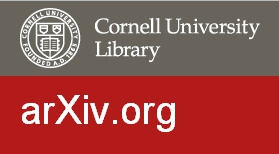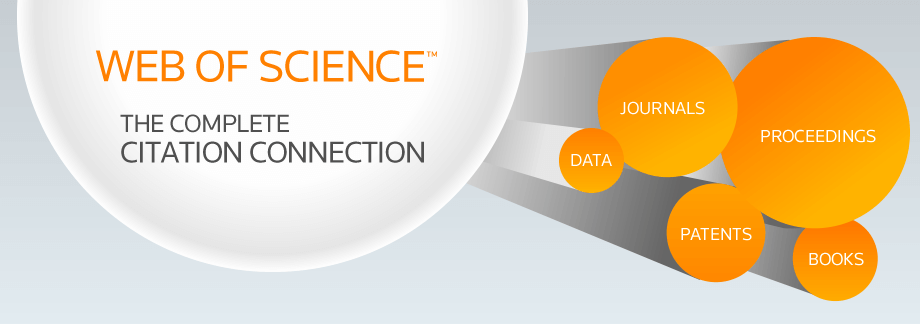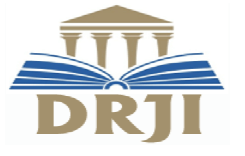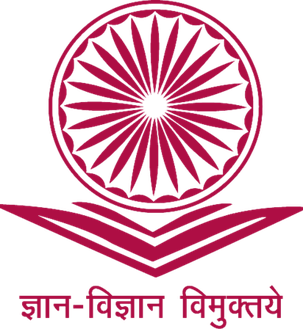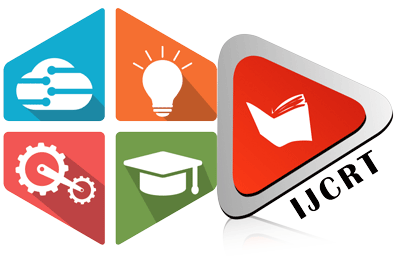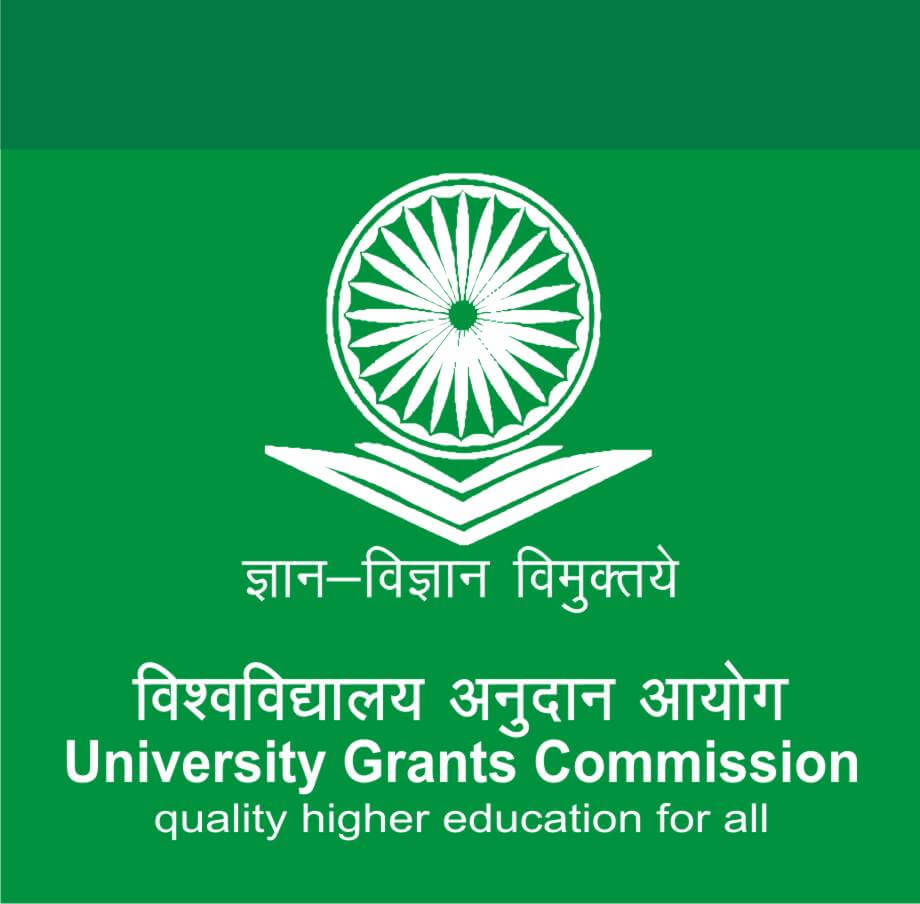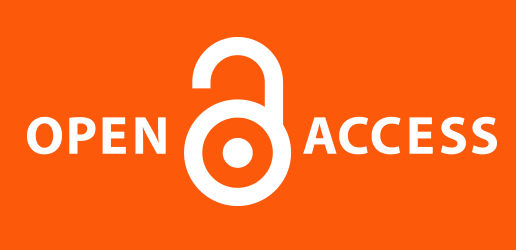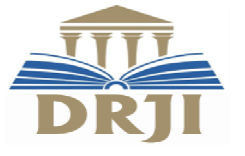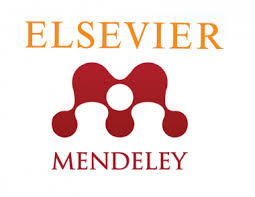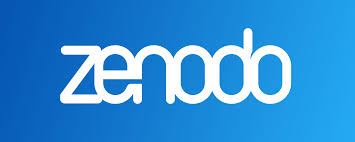INTERNATIONAL JOURNAL OF CREATIVE RESEARCH THOUGHTS - IJCRT (IJCRT.ORG)
International Peer Reviewed & Refereed Journals, Open Access Journal
IJCRT Peer-Reviewed (Refereed) Journal as Per New UGC Rules.
ISSN Approved Journal No: 2320-2882 | Impact factor: 7.97 | ESTD Year: 2013
Call For Paper - Volume 13 | Issue 12 | Month- December 2025
Scholarly open access journals, Peer-reviewed, and Refereed Journals, Impact factor 7.97 (Calculate by google scholar and Semantic Scholar | AI-Powered Research Tool) , Multidisciplinary, Monthly, Indexing in all major database & Metadata, Citation Generator, Digital Object Identifier(CrossRef DOI)
Contact Us Click Here
WhatsApp Contact Click Here
Volume 13 | Issue 10 |
| IJCRT Journal front page | IJCRT Journal Back Page |
Paper Title: REVIEW ON MOTORIZED SAND FILTERING MACHINE
Author Name(s): Prof. Tanuja Hulavale, Abhisek Mishra, Rushikesh Pardeshi, Anuz Zuzam, Vishal Erande, Sadanand Gawade
Published Paper ID: - IJCRTBH02030
Register Paper ID - 295184
Publisher Journal Name: IJPUBLICATION, IJCRT
DOI Member ID: 10.6084/m9.doi.one.IJCRTBH02030 and DOI :
Author Country : Indian Author, India, - , -, - , | Research Area: Science and Technology Published Paper URL: http://ijcrt.org/viewfull.php?&p_id=IJCRTBH02030 Published Paper PDF: download.php?file=IJCRTBH02030 Published Paper PDF: http://www.ijcrt.org/papers/IJCRTBH02030.pdf
Your Paper Publication Details:
Title: REVIEW ON MOTORIZED SAND FILTERING MACHINE
DOI (Digital Object Identifier) :
Pubished in Volume: 13 | Issue: 10 | Year: October 2025
Publisher Name : IJCRT | www.ijcrt.org | ISSN : 2320-2882
Subject Area: Science and Technology
Author type: Indian Author
Pubished in Volume: 13
Issue: 10
Pages: 186-194
Year: October 2025
Downloads: 56
E-ISSN Number: 2320-2882
Abstract
A demonstration of design and fabrication of motorized sand filter system is done. As sand is used in construction, manufacturing and many industrial purposes, it needs to be filtered and separated from unneeded particles, stones and other large particles before put to use. This system puts forward a fully automated sand filtering and separator that automatically filters the sand poured on it. For this a motorized shaft is mounted horizontally on the mounts. The shaft is connected to a filter frame with a mesh below and enclosed frame on sides which operates the motor when switched on.
Licence: creative commons attribution 4.0
License
Keywords
REVIEW ON MOTORIZED SAND FILTERING MACHINE
License
Paper Title: REVIEW ON RAILWAY TRACK CRACK DETECTION
Author Name(s): Prof. Tanuja Hulavale, Gawai Yugant Sanjeev, Jyote Vaibhav Virbhadra, Gurav Rutik Ramesh, Gawade Somnath Arjun
Published Paper ID: - IJCRTBH02029
Register Paper ID - 295185
Publisher Journal Name: IJPUBLICATION, IJCRT
DOI Member ID: 10.6084/m9.doi.one.IJCRTBH02029 and DOI :
Author Country : Indian Author, India, - , -, - , | Research Area: Science and Technology Published Paper URL: http://ijcrt.org/viewfull.php?&p_id=IJCRTBH02029 Published Paper PDF: download.php?file=IJCRTBH02029 Published Paper PDF: http://www.ijcrt.org/papers/IJCRTBH02029.pdf
Your Paper Publication Details:
Title: REVIEW ON RAILWAY TRACK CRACK DETECTION
DOI (Digital Object Identifier) :
Pubished in Volume: 13 | Issue: 10 | Year: October 2025
Publisher Name : IJCRT | www.ijcrt.org | ISSN : 2320-2882
Subject Area: Science and Technology
Author type: Indian Author
Pubished in Volume: 13
Issue: 10
Pages: 174-185
Year: October 2025
Downloads: 39
E-ISSN Number: 2320-2882
Abstract
In India, railway transportation service is the cheap and the majority convenient mode of passenger transport and also for long-distance and suburban traffic. The main cause of the accidents happened in railways are railway track crossing and unrevealed crack in railway tracks. Therefore, there is a need to have new technology which will be robust, efficient, and stable for both crack detection in railway track as well as to object detection. This project discusses a Railway track crack detection using sensors and is a dynamic approach that combines the use of a GPS tracking system to send alert messages and the geographical coordinate of location. Arduino Microcontrollers used to control and coordinate the activities of this device. The Indian Railways consists one of the largest railway networks in the whole world, crises-crossing over 1, 15,000 km in distance, all over India. However, with regard to reliability, dependability, and passenger safety of Indian Railways is not up to the global standards. Among other factors, the cracks are developed on the railway tracks due to absence of the inefficient timely detection Our work involves a project that aims of designing a railway crack detection system (RCDS) using an Ultrasonic Sensor, The GSM (Global System for Mobile Communications), GPS (Global Positioning System) and Arduino based module whose implementation is an efficient method of detecting the cracks which are present in the tracks and thus avoiding derailment of the trains. In this project, we are using an ultrasonic sensor which is used to find the crack in the railway track And also capable of alerting the authorities in the form of SMS messages along with location by using GPS and GSM modules
Licence: creative commons attribution 4.0
License
Keywords
REVIEW ON RAILWAY TRACK CRACK DETECTION
License
Paper Title: REVIEW ON MOTORIZED SHUTTER WITH THEFT ALARM
Author Name(s): Dr.Harish Harsurkar, Suraj Laxman Pawar, Prasanna dattatrey Pawar, Aditya Panjab mahalle, Pratik jeevan Jadhav
Published Paper ID: - IJCRTBH02028
Register Paper ID - 295186
Publisher Journal Name: IJPUBLICATION, IJCRT
DOI Member ID: 10.6084/m9.doi.one.IJCRTBH02028 and DOI :
Author Country : Indian Author, India, - , -, - , | Research Area: Science and Technology Published Paper URL: http://ijcrt.org/viewfull.php?&p_id=IJCRTBH02028 Published Paper PDF: download.php?file=IJCRTBH02028 Published Paper PDF: http://www.ijcrt.org/papers/IJCRTBH02028.pdf
Your Paper Publication Details:
Title: REVIEW ON MOTORIZED SHUTTER WITH THEFT ALARM
DOI (Digital Object Identifier) :
Pubished in Volume: 13 | Issue: 10 | Year: October 2025
Publisher Name : IJCRT | www.ijcrt.org | ISSN : 2320-2882
Subject Area: Science and Technology
Author type: Indian Author
Pubished in Volume: 13
Issue: 10
Pages: 166-173
Year: October 2025
Downloads: 40
E-ISSN Number: 2320-2882
Abstract
Roller shutters are usually defined as a vertical revolving barrier at the entrance of building or room, traditionally made of metal or wood, which its leafs, curtains or slats will be rolled upwards during its opening position and downwards during closing position. Due to the advancement of new inventions, roller shutters are also made of various materials such as aluminum, plastic, coupled with other insulations. The advantage of using roller shutter is for space efficiency and to provide a clear unobstructed opening, while completely securing and compartmentalizing the entrance hole during closure. it is a type of door or window shutter consisting of many horizontal slats (or sometimes bars or webbed systems) hinged together. The shutter is raised to open it and lowered to close it. Roller shutters have many applications, including doors for garages, warehouses, shops, etc. These shutters over the years, if not maintained properly get rusted, and it takes lot of effort to lift them, usually this effort is so high that it can cause back injury to the operator, thus it is important to design a motorized system which can facilitate the opening and closing of shutter by the press of the button and thus reduce the back injuries.
Licence: creative commons attribution 4.0
License
Keywords
REVIEW ON MOTORIZED SHUTTER WITH THEFT ALARM
License
Paper Title: REVIEW ON PAPER CUTTING USING GEVEVA MECHANISM
Author Name(s): Prof.Husain Shaikh, Bhagwat Jejerao Suryawanshi, Vikas Devakar, Ramchandra Ajgaonkar, Mohd Mubashshir Mohd Shabbir Ahmad
Published Paper ID: - IJCRTBH02027
Register Paper ID - 295187
Publisher Journal Name: IJPUBLICATION, IJCRT
DOI Member ID: 10.6084/m9.doi.one.IJCRTBH02027 and DOI :
Author Country : Indian Author, India, - , -, - , | Research Area: Science and Technology Published Paper URL: http://ijcrt.org/viewfull.php?&p_id=IJCRTBH02027 Published Paper PDF: download.php?file=IJCRTBH02027 Published Paper PDF: http://www.ijcrt.org/papers/IJCRTBH02027.pdf
Your Paper Publication Details:
Title: REVIEW ON PAPER CUTTING USING GEVEVA MECHANISM
DOI (Digital Object Identifier) :
Pubished in Volume: 13 | Issue: 10 | Year: October 2025
Publisher Name : IJCRT | www.ijcrt.org | ISSN : 2320-2882
Subject Area: Science and Technology
Author type: Indian Author
Pubished in Volume: 13
Issue: 10
Pages: 157-165
Year: October 2025
Downloads: 55
E-ISSN Number: 2320-2882
Abstract
The design and fabrication of paper cutting machine using Geneva mechanism is very useful to cut papers in equal and accurate dimensions. Geneva drive is an indexing mechanism that converts the continuous motion into intermittent motion. Due to the intermittent motion, the paper is moved between the time intervals of cutting periods. Then the paper cutting is achieved by the crank and lever mechanism. The cutter will be back to its original position by the spring effect.
Licence: creative commons attribution 4.0
License
Keywords
REVIEW ON PAPER CUTTING USING GEVEVA MECHANISM
License
Paper Title: AI-driven DDoS Attack Detection and Mitigation System
Author Name(s): Prof. Namrata Jangam, Miss. Samruddhi Shirsat, MR. Sushant Giramkar, Mr. Ritesh Ganghthade, Mr. Srujan Mailare
Published Paper ID: - IJCRTBH02026
Register Paper ID - 295188
Publisher Journal Name: IJPUBLICATION, IJCRT
DOI Member ID: 10.6084/m9.doi.one.IJCRTBH02026 and DOI :
Author Country : Indian Author, India, - , -, - , | Research Area: Science and Technology Published Paper URL: http://ijcrt.org/viewfull.php?&p_id=IJCRTBH02026 Published Paper PDF: download.php?file=IJCRTBH02026 Published Paper PDF: http://www.ijcrt.org/papers/IJCRTBH02026.pdf
Your Paper Publication Details:
Title: AI-DRIVEN DDOS ATTACK DETECTION AND MITIGATION SYSTEM
DOI (Digital Object Identifier) :
Pubished in Volume: 13 | Issue: 10 | Year: October 2025
Publisher Name : IJCRT | www.ijcrt.org | ISSN : 2320-2882
Subject Area: Science and Technology
Author type: Indian Author
Pubished in Volume: 13
Issue: 10
Pages: 143-156
Year: October 2025
Downloads: 80
E-ISSN Number: 2320-2882
Abstract
Distributed Denial-of-Service (DDoS) attacks have become a serious problem in cybersecurity. This can cause temporary or long-term loss of service to users. These attacks mainly target e-commerce platforms, online services, and financial institutions. Detecting DDoS attacks is essential because they cause serious problems. Detection of DDoS attacks can be effectively achieved using supervised machine learning techniques. This project presents an approach for detecting Distributed Denial of Service (DDoS) attacks using Support Vector Machine (SVM), a supervised machine learning algorithm. The methodology involves storing network traffic data in SQLite3 for efficient management and retrieval. The collected data undergoes preprocessing, including the handling of missing values and feature scaling with StandardScaler, to enhance the accuracy and robustness of the detection model. Experimental results highlight the effectiveness of SVM in distinguishing between normal and malicious traffic, thereby contributing to improved network security. In this paper, we propose new techniques for launching and mitigating DDoS attacks that clearly outperform existing techniques. We also classify DDoS attack techniques as well as the techniques used in their detection, and thus try to provide a broad scoping of the DDoS problem. We also compare our attack module with some of the available tools.
Licence: creative commons attribution 4.0
License
Keywords
DDoS detection, machine learning, deep learning, anomaly detection, network security.
License
Paper Title: UniFix: AI-Powered Cross-Platform Technical Support Automation Tool
Author Name(s): Prof.Priti Chorade, Mr.Dayanand Biradar, Mr.Kiran Jadhav, Mr.Kiran Rote, Mr. Atharva Udafe
Published Paper ID: - IJCRTBH02025
Register Paper ID - 295189
Publisher Journal Name: IJPUBLICATION, IJCRT
DOI Member ID: 10.6084/m9.doi.one.IJCRTBH02025 and DOI :
Author Country : Indian Author, India, - , -, - , | Research Area: Science and Technology Published Paper URL: http://ijcrt.org/viewfull.php?&p_id=IJCRTBH02025 Published Paper PDF: download.php?file=IJCRTBH02025 Published Paper PDF: http://www.ijcrt.org/papers/IJCRTBH02025.pdf
Your Paper Publication Details:
Title: UNIFIX: AI-POWERED CROSS-PLATFORM TECHNICAL SUPPORT AUTOMATION TOOL
DOI (Digital Object Identifier) :
Pubished in Volume: 13 | Issue: 10 | Year: October 2025
Publisher Name : IJCRT | www.ijcrt.org | ISSN : 2320-2882
Subject Area: Science and Technology
Author type: Indian Author
Pubished in Volume: 13
Issue: 10
Pages: 136-142
Year: October 2025
Downloads: 50
E-ISSN Number: 2320-2882
Abstract
FixiQ is an AI-powered crossplatform tool designed to automate technical support for users facing system setup and maintenance challenges. Manual troubleshooting is time-consuming and inconsistent, while existing tools provide only partial support. FixiQ detects issues in real-time, analyzes them, and provides intelligent resolutions across multiple platforms, improving efficiency and reliability. FixiQ is an AI-powered cross- platform automation tool designed to simplify and optimize technical support processes across diverse computing environments. Traditional troubleshooting methods often require manual intervention, leading to inconsistent results, extended downtime, and increased operational costs. FixiQ introduces a fully automated system that detects, analyzes, and resolves software and hardware issues in real time using artificial intelligence and predictive analytics. The system integrates a Python- based microservice powered by machine learning for anomaly detection, a Node.js backend for event-driven communication, and a React.js frontend for dynamic visualization. By continuously monitoring system logs and performance metrics, FixiQ identifies root causes of issues such as dependency conflicts, network failures, or misconfigurations, and provides intelligent corrective actions. The framework also incorporates predictive maintenance, forecasting potential failures before they occur, thereby improving system reliability and uptime. Experimental results demonstrate up to a 60% reduction in manual troubleshooting time and significant improvements in service response accuracy. The modular and scalable design of FixiQ allows seamless integration with existing enterprise infrastructures and supports multi-platform deployment. The growing demand for fast, efficient, and intelligent technical support services has led to the development of AI-driven automation systems. This paper presents a comprehensive review of UniFix--an AI-powered, cross-platform technical support automation tool that leverages machine learning, natural language processing, and multi-platform deployment capabilities to streamline technical support operations. The study evaluates the current landscape of automated support systems, identifies challenges in conventional IT Service Management (ITSM), and explores the role of AI in transforming the helpdesk industry. UniFix introduces a scalable, adaptive, and intelligent framework capable of understanding user intent, classifying issues, retrieving contextual solutions, and learning from user feedback.
Licence: creative commons attribution 4.0
License
Keywords
AI, Automation, Technical Support, Real-time Monitoring, Web Application, Predictive Maintenance, System Optimization, Cross-Platform Support, Issue Forecasting
License
Paper Title: A Novel Adaptive Framework for Robust Driver Drowsiness Detection
Author Name(s): Dr.Manav A. Thakur, Savant Sakshi, Chaudhari Kiran, Bahire Vikas, Fulari Shirin, Mayekar Mansi
Published Paper ID: - IJCRTBH02024
Register Paper ID - 295190
Publisher Journal Name: IJPUBLICATION, IJCRT
DOI Member ID: 10.6084/m9.doi.one.IJCRTBH02024 and DOI :
Author Country : Indian Author, India, - , -, - , | Research Area: Science and Technology Published Paper URL: http://ijcrt.org/viewfull.php?&p_id=IJCRTBH02024 Published Paper PDF: download.php?file=IJCRTBH02024 Published Paper PDF: http://www.ijcrt.org/papers/IJCRTBH02024.pdf
Your Paper Publication Details:
Title: A NOVEL ADAPTIVE FRAMEWORK FOR ROBUST DRIVER DROWSINESS DETECTION
DOI (Digital Object Identifier) :
Pubished in Volume: 13 | Issue: 10 | Year: October 2025
Publisher Name : IJCRT | www.ijcrt.org | ISSN : 2320-2882
Subject Area: Science and Technology
Author type: Indian Author
Pubished in Volume: 13
Issue: 10
Pages: 129-135
Year: October 2025
Downloads: 60
E-ISSN Number: 2320-2882
Abstract
Driver in attention and distraction are major reasons for road accidents, and many of these accidents cause serious injuries or deaths. To reduce such incidents, systems detect when a driver is in attentive or distracted. Existing systems provides limited in use or focus mainly on one cause, such as driver fatigue. In this, system recognise drowsiness by looking at facial signs such as yawning, eye movements and head position. A key step of this system is feature extraction, which picks out important parts of the face and eyes from images. Deep learning models like CNN, EAR, OpenCV and MobileNet are used to identify drowsiness more accurately.
Licence: creative commons attribution 4.0
License
Keywords
Driver Drowsiness Detection, Computer Vision, Deep Learning, Adaptive Systems, Robustness, Facial Analysis, Driver Drowsiness, Computer Vision, Deep Learning, Adaptive Systems, Software-Defined AI, AURA-L.
License
Paper Title: A Multimodal Fusion Framework for Advertisement Understanding and Engagement Prediction
Author Name(s): Prof. Soni R. Ragho, Mr. Anish Jagdale, Mr. Dayanand Kadam, Mr. Sanket Misal, Miss. Suchita Shinde
Published Paper ID: - IJCRTBH02023
Register Paper ID - 295191
Publisher Journal Name: IJPUBLICATION, IJCRT
DOI Member ID: 10.6084/m9.doi.one.IJCRTBH02023 and DOI :
Author Country : Indian Author, India, - , -, - , | Research Area: Science and Technology Published Paper URL: http://ijcrt.org/viewfull.php?&p_id=IJCRTBH02023 Published Paper PDF: download.php?file=IJCRTBH02023 Published Paper PDF: http://www.ijcrt.org/papers/IJCRTBH02023.pdf
Your Paper Publication Details:
Title: A MULTIMODAL FUSION FRAMEWORK FOR ADVERTISEMENT UNDERSTANDING AND ENGAGEMENT PREDICTION
DOI (Digital Object Identifier) :
Pubished in Volume: 13 | Issue: 10 | Year: October 2025
Publisher Name : IJCRT | www.ijcrt.org | ISSN : 2320-2882
Subject Area: Science and Technology
Author type: Indian Author
Pubished in Volume: 13
Issue: 10
Pages: 116-128
Year: October 2025
Downloads: 67
E-ISSN Number: 2320-2882
Abstract
Online advertisements are one of the most common ways brands connect with people, combining images, text, and design to capture attention, measuring audience reaction but also for predicting how well an ad might perform. Traditional methods often focus only on sentiment or single aspects of ads, which leaves out many important factors like call-to-action text, visual appeal, or the likelihood of engagement. This paper presents a multimodal framework that brings together both visual and textual information from advertisements. This method uses a ResNet18 network to learn visual features from ad images and a DistilBERT model to capture the meaning of the text extracted from them. These features are merged through a fusion block and then passed into multiple task-specific modules. The framework can identify ad themes, emotions, and trustworthiness, detect objects and visual styles, and predict outcomes such as click-through rate (CTR) and audience engagement by using ADS-DS-1M dataset.
Licence: creative commons attribution 4.0
License
Keywords
Multimodal Learning, Advertisement Analysis, Sentiment Recognition, Emotion Detection, Cross-Attention Fusion, Multiscale Visual Features, Engagement Prediction, Trustworthiness, Vision-Language Models, Advertisement Dataset
License
Paper Title: Experimental Study on Enhancing Properties of Plaster Using Natural Material
Author Name(s): Prof. Shraddha P. Pujari, Gaurav Rajbhar, Kirankumar Sanap, Dhiraj Kulkarni, Nikam Rupali
Published Paper ID: - IJCRTBH02022
Register Paper ID - 295192
Publisher Journal Name: IJPUBLICATION, IJCRT
DOI Member ID: 10.6084/m9.doi.one.IJCRTBH02022 and DOI :
Author Country : Indian Author, India, - , -, - , | Research Area: Science and Technology Published Paper URL: http://ijcrt.org/viewfull.php?&p_id=IJCRTBH02022 Published Paper PDF: download.php?file=IJCRTBH02022 Published Paper PDF: http://www.ijcrt.org/papers/IJCRTBH02022.pdf
Your Paper Publication Details:
Title: EXPERIMENTAL STUDY ON ENHANCING PROPERTIES OF PLASTER USING NATURAL MATERIAL
DOI (Digital Object Identifier) :
Pubished in Volume: 13 | Issue: 10 | Year: October 2025
Publisher Name : IJCRT | www.ijcrt.org | ISSN : 2320-2882
Subject Area: Science and Technology
Author type: Indian Author
Pubished in Volume: 13
Issue: 10
Pages: 105-115
Year: October 2025
Downloads: 55
E-ISSN Number: 2320-2882
Abstract
This study focuses on improving the properties of lime plaster by adding molasses and sticky rice paste. Lime plaster is known for being durable and flexible, with durability being its most remarkable property, making it highly useful for wall surface preservation. The addtion of molasses and sticky rice paste has been shown to enhance its performance, particularly in terms of compressive strength and workability. Workability tests were conducted on fresh lime plaster, while compressive strength tests were carried out on 7-day cured cubes prepared with these organic additives. Lime, sticky rice, and molasses together play a vital role in improving the quality of plastering material, while also reducing construction costs and carbon emissions. Since these are eco-friendly and non-toxic materials, they pose no harm to humans or the environment. Overall, the inclusion of organic binders makes lime plaster more sustainable and efficient for construction use.
Licence: creative commons attribution 4.0
License
Keywords
Lime Plaster, Stick rice paste, Molasses, Workability, Compressive Strength, environment friendly.
License
Paper Title: BASALT FIBER REINFORCED INTERLOCKING CONCRETE PAVING BLOCK
Author Name(s): Prof. Pooja Patil, Swapnil Khot, Ashish Khanvilkar, Swapnil Kawad, Kunal Jadhav
Published Paper ID: - IJCRTBH02021
Register Paper ID - 295193
Publisher Journal Name: IJPUBLICATION, IJCRT
DOI Member ID: 10.6084/m9.doi.one.IJCRTBH02021 and DOI :
Author Country : Indian Author, India, - , -, - , | Research Area: Science and Technology Published Paper URL: http://ijcrt.org/viewfull.php?&p_id=IJCRTBH02021 Published Paper PDF: download.php?file=IJCRTBH02021 Published Paper PDF: http://www.ijcrt.org/papers/IJCRTBH02021.pdf
Your Paper Publication Details:
Title: BASALT FIBER REINFORCED INTERLOCKING CONCRETE PAVING BLOCK
DOI (Digital Object Identifier) :
Pubished in Volume: 13 | Issue: 10 | Year: October 2025
Publisher Name : IJCRT | www.ijcrt.org | ISSN : 2320-2882
Subject Area: Science and Technology
Author type: Indian Author
Pubished in Volume: 13
Issue: 10
Pages: 97-104
Year: October 2025
Downloads: 44
E-ISSN Number: 2320-2882
Abstract
Concrete Block Pavement (CBP) is getting popularity in areas where normal flexible pavement does not last long. Application of CBP is developing very fast for various reasons such as high resistance to deformation, durability, easy and rapid quality construction, ability to carry traffic immediately after construction, compatibility with the environment and aesthetic features etc. The structural behavior of CBP is similar to flexible pavement. However, the performance of CBP depends upon on block shape, size, thickness, type of bedding and jointing sand, joint width. The process of manufacturing is simple and standardized. Cement concrete is a mixture of cement, sand and stone chips in correct proportions. The items are mixed in water and churned thoroughly in a concrete mixture. The process involves proportioning, Mixing, Compacting, Curing & Drying. A concrete mix of 1:2:4cement: sand: stone chips by volume are used for making paving blocks. Concrete paver blocks are used in various applications like street road, small and medium market roads, low volume roads and other construction places. Recently in concrete paver block fibers are introduced to increase strength, durability and reduction in cracks. Fibers in concrete paver block improve properties of paver block. The concrete paver block maintenance is low and economic when compared with other pavements. Experimental investigations show that compressive strength and flexural strength of Polypropylene concrete paver block is higher than the normal paver blocks. Hence it can be used in heavy traffic area and give surface resistance for longer life. By using fibers in concrete paver block, it increases resistance to impact/abrasion and greatly improves quality of construction. Therefore, paver blocks with fibers do not easily crack, break or buckle. Basalt fiber offer prospect of completely concrete. They have potential to high performance and cost effectively replaces of fiberglass, steel, new range of composite materials and product. Low cost high performance fibers offer potential to solve the largest problem in the cement and concrete industry, cracking and structural failure of concrete. They have potential to high performance and cost effectively replace of fiberglass and steel.
Licence: creative commons attribution 4.0
License
Keywords
Paver blocks, fibre, concrete, sand, chips
License
December 2025
Volume 13 | Issue 12
Last Date :
31-Dec-2025
Submit Manuscript Online Impact Factor: 7.97 Review Results : Within 02-03 Days Paper Publication : Within 02-03 Days

ISSN: 2320-2882 Impact Factor: 7.97 and ISSN APPROVED Journal Starting Year (ESTD) : 2013

ISSN: 2320-2882 Impact Factor: 7.97 and ISSN APPROVED Journal Starting Year (ESTD) : 2013
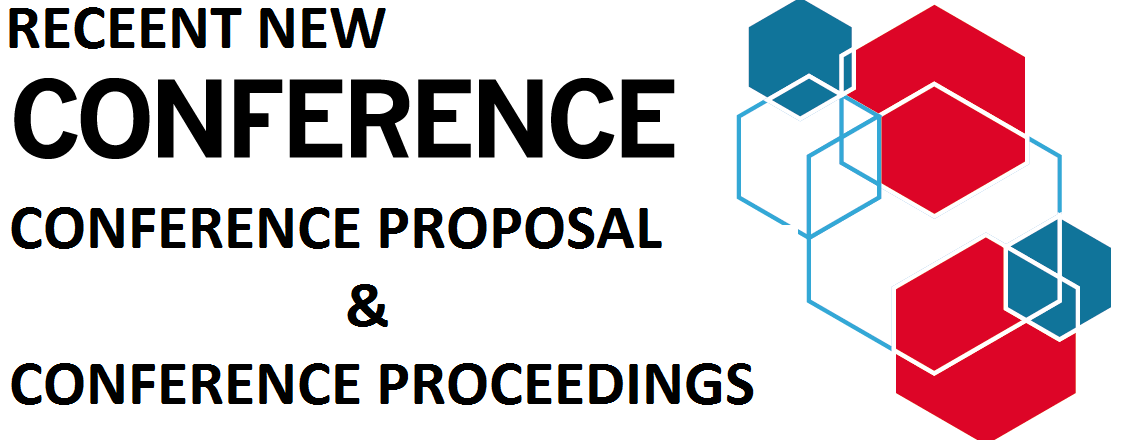
CONFERENCE PROPOSAL CONFERENCE PROCEEDINGS




